This discussion and review contains spoilers for Star Trek: Strange New Worlds season 2, episode 8, “Under the Cloak of War,” on Paramount+.
“Under the Cloak of War” is a legitimately impressive episode of Star Trek, and it’s safely the most thematically and narratively ambitious episode of Strange New Worlds to date.
Pop culture exists in a larger context. The original Star Trek was shaped and defined by the Vietnam War, while Star Trek: Enterprise was caught in the gravity of the ongoing War on Terror. With the withdrawal of American forces from Iraq and Afghanistan, it makes sense that pop culture should be drawn to the idea of the aftermath of such long and brutal conflicts. Recently, animated Star Wars show The Bad Batch was most compelling as a study of the abandoned veterans of a forgotten forever war.
As such, it makes sense for Strange New Worlds to focus on the aftermath of the Federation-Klingon War that raged through the first season of Star Trek: Discovery. “Under the Cloak of War” is an episode about the legacy and the scars of that conflict, particularly as experienced by veterans like Erica Ortegas (Melissa Navia), Joseph M’Benga (Babs Olusanmokun), and Christine Chapel (Jess Bush). There is some irony that the ship’s surgeon carries the deepest scars.
As with the season’s other standout episode, “Ad Astra Per Aspera,” “Under the Cloak of War” works in large part because it cannily employs a familiar Star Trek narrative framework to tell a story that feels strangely timely. “Ad Astra Per Aspera” was an obvious riff on classic courtroom episodes like “Court Martial” or “The Measure of a Man.” Similarly, “Under the Cloak of War” adopts the classic “ferrying the ambassador” template established by stories like “Journey to Babel” or “Elaan of Troyius.”
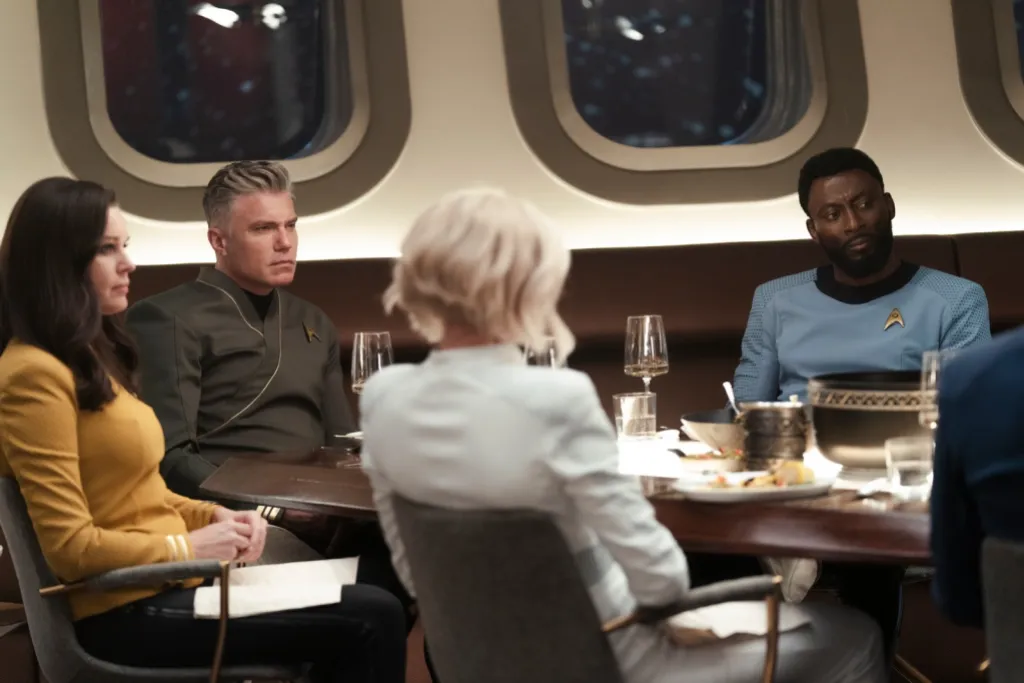
“Under the Cloak of War” finds the Enterprise ferrying Ambassador Dak’Rah (Robert Wisdom). A former military leader known as “the Butcher of J’Gal,” Dak’Rah defected to the Federation and embraced the organization’s idealistic philosophy. The former general now advocates for peace, his mere existence serving as validation of the Federation’s utopian ideals. However, his presence stirs up traumatic memories for veterans of that conflict, raising questions of whether people can change.
This storyline is intercut with flashbacks to the Battle of J’Gal, with Christine Chapel assigned to work at a field hospital treating Starfleet’s wounded under Chief Medical Officer Bob Martinez (Star Trek veteran Clint Howard). Here, “Under the Cloak of War” draws more heavily from Star Trek: Deep Space Nine than from Star Trek: The Next Generation or Star Trek: Voyager, recalling the field hospital in “Nor the Battle to the Strong” or the asteroid base under fire in “The Siege of AR-558.”
“Under the Cloak of War” benefits immediately from two key factors. The first is the guest cast. Robert Wisdom is a phenomenal performer. Dak’Rah is an interesting character on paper, recalling Kodos (Arnold Moss) in “The Conscience of the King,” but Wisdom is able to sink his teeth into the role and imbue Dak’Rah with genuine complexity. He feels like a fully formed individual and not just a cypher. Similarly, Clint Howard is a delightful screen presence, lending gravitas to a small role.
The other advantage that “Under the Cloak of War” has is that it is drawing most heavily from Deep Space Nine. So much of Strange New Worlds, Star Trek: Picard, and Star Trek: Lower Decks directly evokes The Next Generation, Voyager, and the first two seasons of Enterprise — a mode of Star Trek storytelling that was already past its prime by the dawn of the 21st century. In contrast, Deep Space Nine was a show ahead of the curve, and Star Trek has suffered from its reluctance to draw from and build upon that.
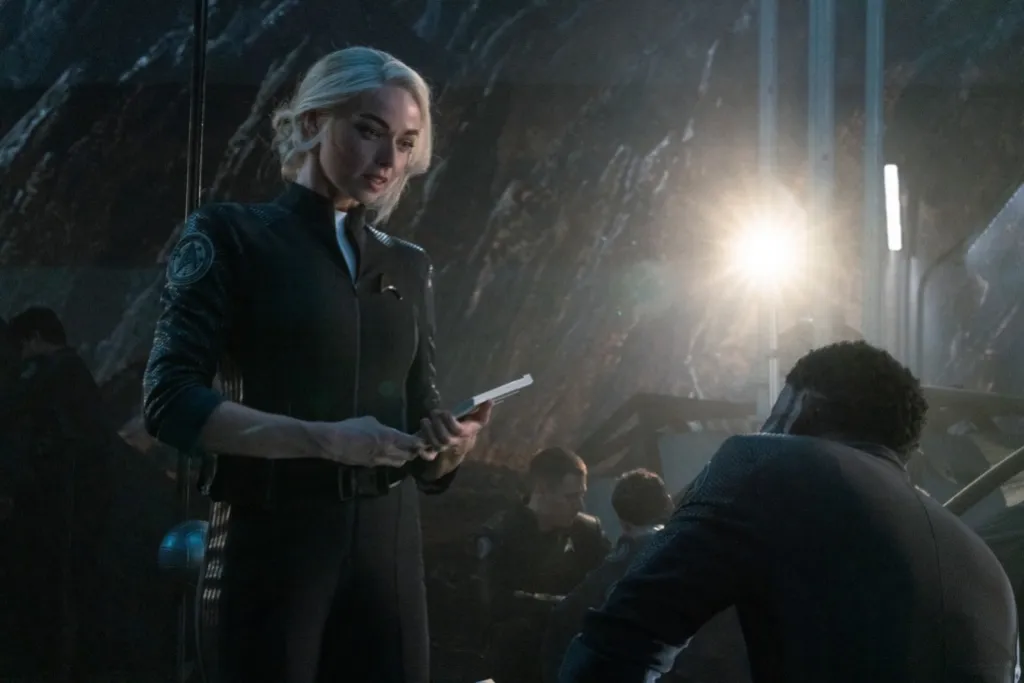
It also helps that Davy Perez’s script is literary in a way that modern Star Trek rarely allows itself to be. This is reflected in small details, like the names of stellar objects. While “Those Old Scientists” name-dropped the Setlik System from “The Wounded,” “Under the Cloak of War” makes references to works outside of the franchise. Dak’Rah is being brought to the Prospero System, an allusion to The Tempest, another story about “revenge and forgiveness.” Dak’Rah talks about his work on Athos, named for the member of The Three Musketeers who is most ambiguous about his own past.
More broadly, the storytelling in “Under the Cloak of War” is very deliberate and very heightened. In many ways, Perez is employing the classic Michael Piller Star Trek template, the character-driven approach to storytelling that everything in an episode of Star Trek must in some way serve to tell a story about at least one of the central characters. Dak’Rah is a compelling character on his own terms, but he’s also obviously constructed as a mirror to M’Benga, literally and metaphorically.
While M’Benga hides his scars away, Dak’Rah wears his wounds openly. He walks with a cane, a constant reminder of the injuries that he received during the war. Dak’Rah is alleged to have killed his own men to escape J’Gal, while M’Benga is forced to purge the transporter pattern of Ensign Alvarado (Jose Gutierrez-Solana) from the buffer in order to speed evacuation, effectively killing his own patient. M’Benga is a doctor who literally heals wounds, while Dak’Rah tries to heal deeper scars.
This is most apparent in the final conversation between the two, in which Dak’Rah tries to position himself as a healer to M’Benga. “Please, let me have a chance to help you heal,” Dak’Rah appeals to the veteran. He presses, “M’Benga, I’m here to provide healing.” If Dak’Rah is the healer, then what does that make M’Benga? In their final scene, M’Benga confesses that it was actually him who killed Dak’Rah’s private staff. “I am the Butcher of J’Gal,” M’Benga admits, in private.
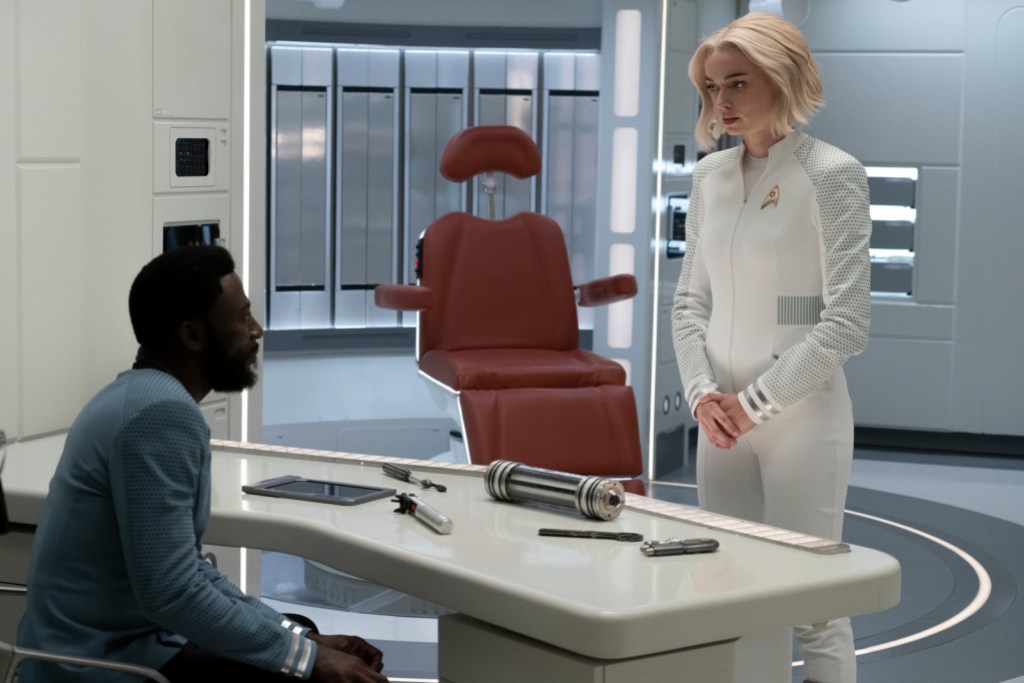
Babs Olusanmokun is the standout performer on Strange New Worlds, maybe the cast’s strongest dramatic actor. Olusanmokun has an incredible screen presence and a soulful countenance. Strange New Worlds hasn’t always made the best use of M’Benga as a character, with the first season focusing on a subplot concerning his daughter Rukiya (Sage Arrindell) that could never have gone anywhere given the logistical constraints of a 10-episode-a-season streaming show.
“Under the Cloak of War” finally gives Olusanmokun material worthy of him, asking the actor to go toe to toe with Wisdom. It’s one of the best performances in a Star Trek episode in years. “Under the Cloak of War” daringly suggests there’s not so much difference between M’Benga and Dak’Rah, their two bodies wrestling behind frosted glass and the particulars of Dak’Rah’s death left somewhat ambiguous. Was it self-defense? Was it premeditated? Was it, in some abstract sense, self-inflicted?
“Under the Cloak of War” asks difficult questions about the legacy of turbulent times. It’s revealed that Dak’Rah’s entire mythology is a lie — that he didn’t kill his men before defecting as a conscientious objection to the war, but fled to Starfleet in a panic. However, does that invalidate all the good that he has done since? “People need saints, they need belief,” he tells M’Benga. “If people knew the truth, my work would be undone.” It’s a thorny issue.
It’s compounded by the fact that Dak’Rah has succeeded in getting past that horrific trauma, even if he had to lie to do that. “You actually seem like you’re able to put the past behind you,” M’Benga accuses him. “In fact, you make it look easy.” Is M’Benga’s contempt of Dak’Rah rooted in more than just Dak’Rah’s service record? Is it resentment of this man who could let go of the past in a way that he cannot? Is he just externalizing his anger at “the Butcher of J’Gal”? “Under the Cloak of War” doesn’t answer these questions, and it is stronger for it.
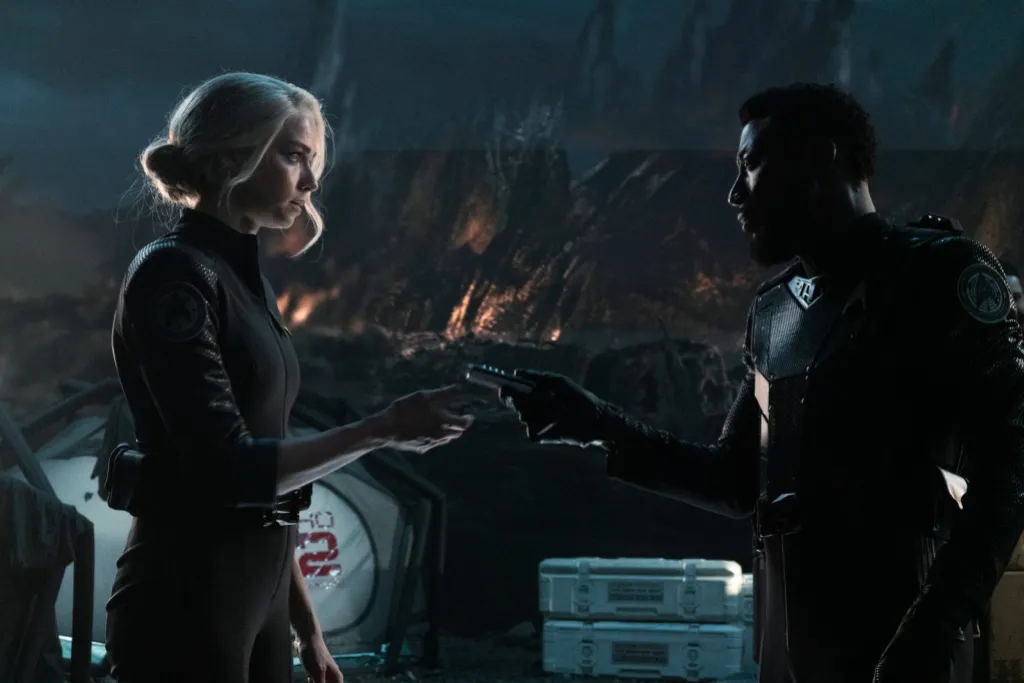
Again, this comes down to the literary quality of Perez’s script. At its core, “Under the Cloak of War” is a story about how fundamentally alien people are from one another. It’s a script that is constantly looking at M’Benga from the outside rather than getting inside his head. In flashbacks, M’Benga is largely seen through Chapel’s eyes, his true actions only revealed at the end of the story. In the present tense, M’Benga is primarily mirrored through Dak’Rah.
“No one ever really knows what goes on in anyone’s heart,” Chapel argues towards the end of the episode. In his final conversation with Christopher Pike (Anson Mount), M’Benga makes it clear that there are fundamental limits to how much Pike could ever know about him. “We’ve known each other for a very long time, see eye to eye on most things, but you haven’t lived my life,” he advises his commanding officer. “Under the Cloak of War” avoids any tidy denouement. There are no easy answers. There may not be any answers.
It feels somewhat appropriate that “Under the Cloak of War” arrives a week after Christopher Nolan’s Oppenheimer, an epic blockbuster built around the same core idea that people are fundamentally unknowable. It is a big and thorny idea, particularly for Star Trek. After all, this is a franchise built on the notion of exploration and discovery, so there is something radical in the suggestion that these hard limits exist on human knowledge.
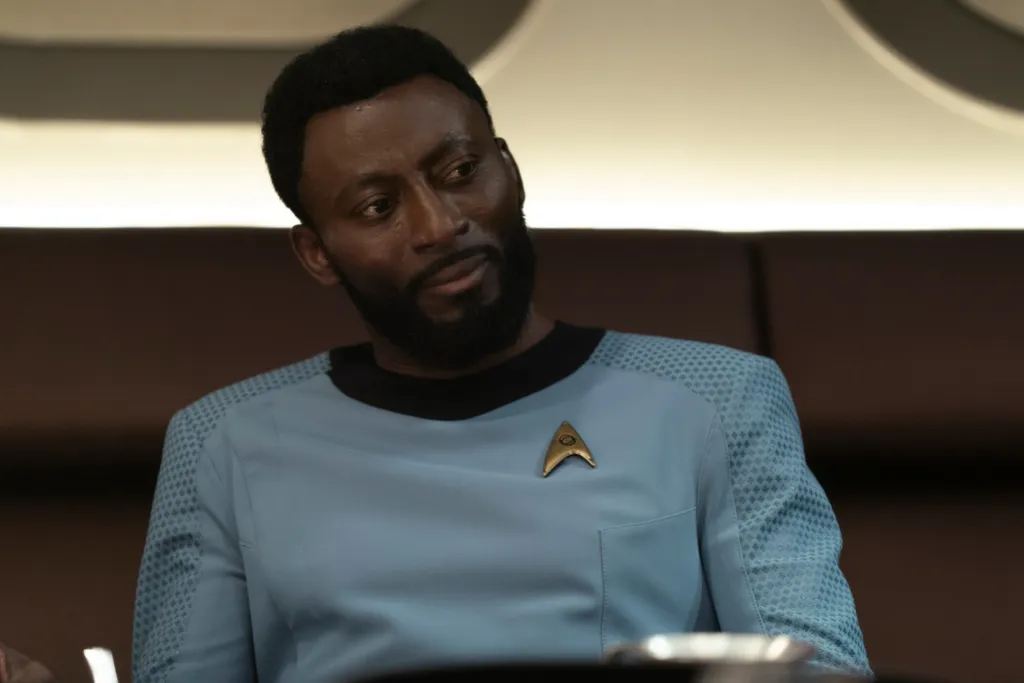
It helps that the production is top-notch. It’s directed by Spike Lee protégé Jeffrey W. Byrd, who does an excellent job at building tension during the present-day dialogue-driven scenes, and he manages to create a sense of scale to the claustrophobic sequences on J’Gal. As with “The Broken Circle,” composer Nami Melumad draws heavily from the franchise’s Klingon leitmotifs, especially The Undiscovered Country. The show’s soundtrack can occasionally feel a little too familiar, but it works beautifully here.
It is also worth acknowledging the design of Dak’Rah. Chris Bridges’ prosthetics department and Olga Kirnos’ makeup department do an excellent job synthesizing the redesign of the Klingons in Discovery with the more traditional Next Generation appearance. It’s a commendable hybrid of old and new styles, one that doesn’t feel suffocated by nostalgia for the aesthetics of the Berman era. Like the episode itself, it finds something new to do with an older template.
“Under the Cloak of War” is a remarkable accomplishment. It’s a striking and provocative episode of Star Trek, demonstrating an ambition that Strange New Worlds has often lacked. After almost two seasons, Strange New Worlds seems like it is finally beginning to boldly go somewhere strange and new.

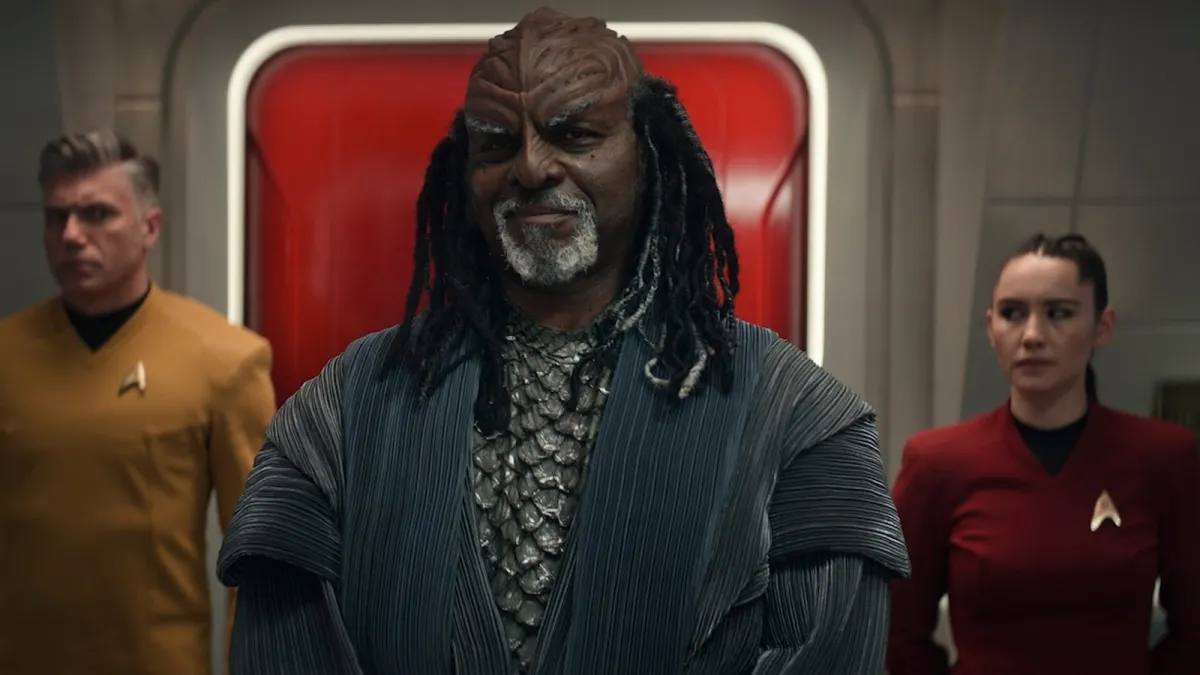




Published: Jul 27, 2023 10:00 am